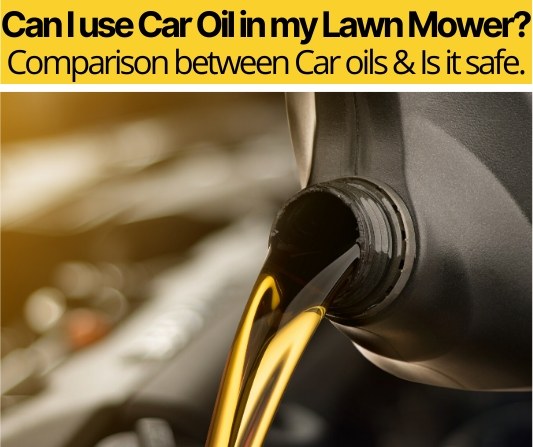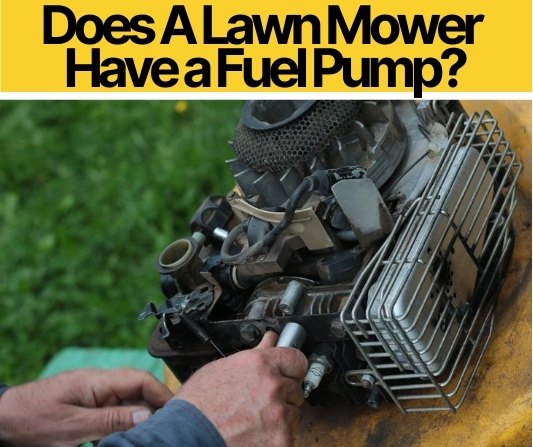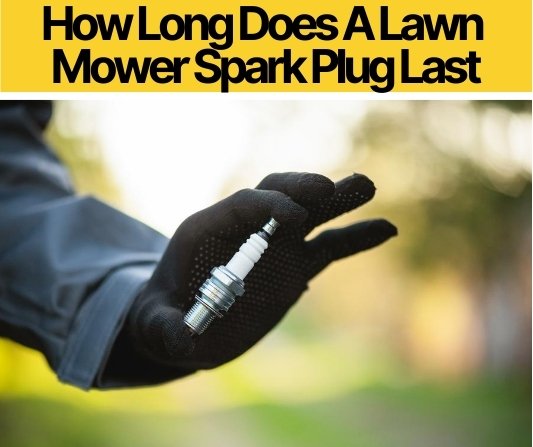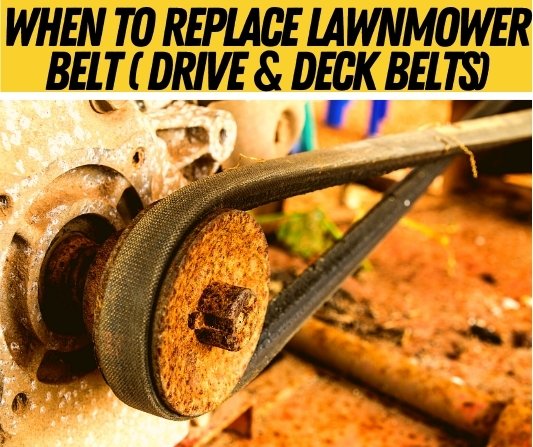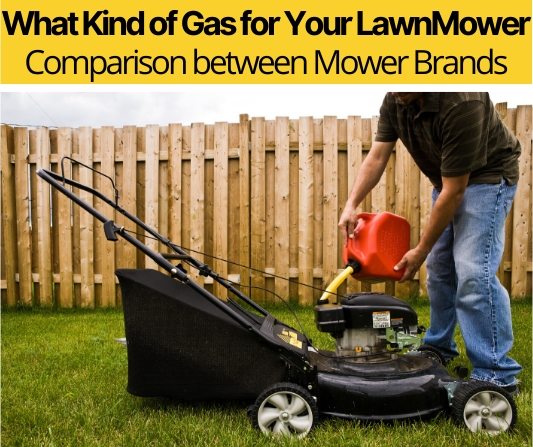 Lawn mowers are simple enough to refuel and take less gas than cars, but it is quite important that you’re using the right kind of gasoline.
Lawn mowers are simple enough to refuel and take less gas than cars, but it is quite important that you’re using the right kind of gasoline.
Blindly dumping whatever kind of gas you put in your car, into your lawnmower could cause major problems for its engine, and prematurely end the life of a perfectly good mower.
This article will help you make the right fuel decisions for your mower so it can run at its longest and at its most efficient.
What is the best kind of gas to use for my Lawn mower?
The best kind of gas for your lawn mower is unleaded, low or non-ethanol fuel. You should look for gas with an octane rating no lower than 87 (most gas stations’ regular gas is 87 at the very least anyway) and with no more than 10% ethanol. In general, you might want to avoid gas with ethanol in it all together, as you can use regular gas from the gas station for your mower, but it will probably shorten the life of your engine.
Fresh fuel is also better, and you should replace gas that is 30 days old with fresh gasoline, or at least mix it with fresh fuel to recycle it. If you want to use 10% or lower ethanol fuel, since it’s cheaper, you should probably buy a fuel stabilizer like STA-BIL, which you can pour in the tank before filling it with gas to keep your engine running healthier, especially if you plan on storing your mower for a long time.
For riding mowers
Bigger riding mowers usually require bulkier engines to operate, but they generally do not require anything different from the gas described earlier, though. Fresh, 87 octane or higher, low or no ethanol gasoline. However, there are a few models that use diesel, so be sure to check your owner’s manual.
For push mowers
Push mowers usually have smaller engines, but don’t require anything different from the norm. Remember, 87 octane or higher, 10% to no ethanol. However, if your push mower is very old-fashioned, it might have a two-cycle engine. These lawn mowers only have one fuel cap that requires a mix of oil and gasoline. We’ll cover that down in the section about two-cycle engines.
Using Premium gasoline
You can use Premium gasoline in your lawn mower, but there isn’t much of a reason to. Remember that premium gas is more expensive than regular due to its higher octane rating, and most lawn mowers only need fuel with an octane rating around 87 or 89. So it would be a fairly big waste of money to use only premium, especially if gas prices go back up again. Think of it like fueling your car, if it doesn’t need premium gas, you should just use something cheaper. The same principle applies for mowers.
Where can I buy gasoline for my lawn mower?
You should check to see if you can find a gas station that pumps E10 or non-ethanol fuel in your area, as there are some chains that have it available at filling stations, much like how some have diesel. If you can’t find a station that pumps it, you can purchase cans of ethanol free gas for both four-cycle and two-cycle engines at your local Home Depot or Lowe’s, 110 oz. cans usually cost about $25.
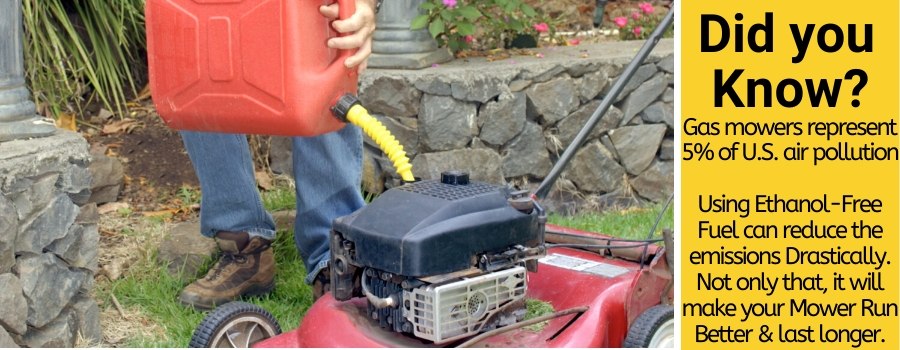
Comparison Between Most Popular Mowers
Below you’ll find a list of popular lawn mower models and the best kind of fuel for each of them.
Also Read: When to Replace Lawn Mower Spark plug
John Deere mowers
Depending on the model, John Deere uses Briggs & Stratton engines or John Deere brand engines. You can use unleaded fuel with an octane rating between 87 and 92, but keep in mind that some models take diesel, or even propane. The same rules about using gasoline with less than 10% or no ethanol apply here, and Melly Parker from HomeGuides recommends adding 2.5 ounces of stabilizer per 5 gallons of fuel to keep the gasoline fresher in the tank if you plan on not using it for a while.
Toro mowers
Toro engines use Briggs & Stratton engines and a few models use Toro-made engines. Toro.com recommends using gasoline with an octane rating of at least 87 and not using any fuel with more than 10% ethanol or methanol, or preferably, ethanol-free fuel. They also recommend only buying the amount of fuel you need for 30 days and adding stabilizer (they sell their own brand) into your fuel tank before filling it.
Honda mowers
Honda mowers, unsurprisingly, often use Honda engines to operate. Honda’s website recommends using fuel with 10% ethanol or less (or ethanol free varieties like TruFuel) and using a stabilizer such as STA-BIL or Honda 08732-0800 if you plan to keep the fuel in the tank for more than thirty days. They also recommend that you clean the air filter regularly and keep the fuel valve OFF when you’re not using the mower.
Murray mowers
Most Murray mowers have Briggs & Stratton engines, which work best using gasoline of at least 87 octane and 10% ethanol or less, but ethanol free options such as TruFuel are available as well. Briggs & Stratton’s website also recommends using STA-BIL as a fuel additive.
Husqvarna mowers
Husqvarna tends to use Briggs & Stratton, Kohler, and Kawasaki engines in their mowers. Their website recommends using gasoline of at least 89 octane and 10% ethanol or less (or none at all, such as TruFuel), but keep in mind that some require diesel. They also recommend not storing gasoline for more than 30 days and to use STA-BIL or Husqvarna brand fuel stabilizer. They also recommend not using a vent cap if you plan on storing gasoline for a long time, to avoid exposure to air and moisture. Water is terrible for your engine.
Craftsman mowers
Most Craftsman mowers use Briggs & Stratton engines, which, as you might expect, take gasoline of about 87 octane or higher, no more than 10% ethanol, but there are also ethanol free options to use such as TruFuel. Briggs & Stratton’s website also recommends using STA-BIL as a fuel additive.
Can I use high octane gas in my lawn mower?
Like I said earlier, using higher octane gasoline (90-93) in place of regular octane fuel will not hurt your mower. The problem with this, though, is that higher octane gas costs much more than regular octane, and you’ll essentially be paying more money for the exact same results. The only time you should think about using a higher octane fuel is if your owner’s manual recommends a higher octane rating, but even that is not a tremendous leap. The highest recommended octane rating that I’ve come across is about 89, which is usually Plus or Mid-Grade fuel at your average filling station.
Also read: Can I use Car Oil in my Lawn Mower
Is ethanol-free gas better for lawn mowers?
Yes, definitely. Ethanol is a grain-based biofuel (it’s an alcohol, the very same that you find in alcoholic beverages) added to gasoline. It reduces emissions that are harmful to the environment but burns much faster and hotter than gasoline. According to Husqvarna’s website, ethanol also absorbs fifty times more water than regular gasoline, which can spell disaster for your engine. Ethanol is also corrosive to engine parts such as carburetors and fuel lines. Using ethanol fuel in your lawn mower will not only significantly reduce the engine’s lifespan, but it will often void its warranty, so you can’t get your money back if your mower stops working too early.
Benefits of ethanol free fuel
Ethanol free fuel is often more expensive than regular fuel, and that might keep some people from investing in it. But the added price will ultimately lead to a lawn mower that lasts longer due to lack of corrosion, starts easier from lack of water build-up, and meets emission standards, so you aren’t causing any pollution. Not to mention, you don’t have to shell out any extra money on a new lawn mower and keep your current one for a much longer period of time.
What is “E10” gasoline?
E10 gasoline is fuel containing 10% ethanol, and is the absolute highest ethanol concentration you can put into your small engines. Other ethanol-gasoline blends such as E15 (15% ethanol) and E85 (85% ethanol) are actually illegal to use in small engines according to the EPA, as that would violate the Clean Air Act (CAA). But remember, just because you can use E10 fuel in your small engines doesn’t necessarily mean you should. Any amount of ethanol could cause damages to your lawn mower down the line, so you are still much better off purchasing ethanol free fuel. Remember, your lawn mower’s gas tank is much smaller than your car or truck, so the added price won’t make a tremendous impact on your wallet, not to mention it lasts much longer in storage than gasoline you pumped from a fuel station.
Two-cycle vs. Four-cycle engines
Gas mowers vary in size and strength, from humble single-blade push mowers to zero-turn, multi-bladed, industrial riding beasts.
Read more: How Sharp Should a Lawn Mower Blade Be
But the most common engines that you will find on lawn mowers are four-cycle (four-stroke) and two-cycle (two-stroke). Both are internal combustion engines, but two-cycle engines have fewer moving parts and only require one full turn of the crankshaft to complete a power cycle, while a four-cycle requires two. Two-cycle engines are more lightweight with a higher torque, but are louder and burn through fuel faster, while four-cycle engines are heavier, cleaner and more fuel efficient.
You can expect most modern mowers to use four-cycle engines, since you generally don’t see lawn mowers that use two-cycle engines anymore (they were phased out due to environmental concerns). But the easiest way to tell if your lawn mower uses a two stroke versus a four stroke is by looking at the fuel cap. If your mower has only one fuel cap for both oil and gasoline, it’s a two-cycle. If your mower has a separate cap for gas and oil, it’s a four-cycle engine.
What kind of gas does a two-cycle engine require?
Two-cycle engines, usually found on smaller engines like weed whackers and chainsaws, or on old-fashioned mowers, require a mix of oil and low ethanol fuel to be poured into the fuel cap. You can mix two-cycle engine oil and fuel (87 octane or higher, 10% or less ethanol) yourself, since the gas-to-oil ratio is usually included in the owner’s manual. But you can also purchase premixed fuel at your local home improvement store. Premixed comes at a higher cost than self-mixed fuel, but self-mixing fuel is more time-consuming and prone to human error, and premixed fuel has a longer shelf life, lasting for years if left unopened as opposed to just 30 days.
What kind of gas does a four-cycle engine require?
Four-cycle engines, the kind you most typically find in lawn mowers nowadays, have readymade non-ethanol fuel available for purchase at most home improvement stores. But if you’re taking it from the pump, the same general rule for all small engines apply. 87 octane or more, with no more than 10% ethanol, although no ethanol is preferable. The big difference between four-cycle and two-cycle is that four-cycle engines don’t need the oil to be mixed in with the fuel (in fact, make sure you DON’T add oil into your gas tank or you’ll ruin your engine), they are added separately in different caps. If you have to use gas with ethanol in it, add some fuel stabilizer first.
Related Questions.
How long is gas good for in a lawn mower?
About thirty days. If you used gas with ethanol in it, take extra care to add some fuel stabilizer into the tank before you add the gasoline, to avoid water buildup or corrosion, but you should add some stabilizer no matter what kind of fuel you use if you plan on storing your mower for a while to keep the gas from curdling. Gasoline that has gone bad tends to be dark colored and foul-smelling. If your lawnmower gas has gone bad, you have a few options. The first is to recycle it, although this is typically for gas that has only recently expired. Add a good amount of fresh fuel into your mower along with the old fuel.
The machine should run just fine, but don’t be surprised if it burns through the old/new mixture quicker, as the gasoline has lost some of its potency. If your gasoline has aged past the point of point of usefulness, there is a safe way to dispose of it. Drain the old gas out of the mower’s tank into a government approved container (most store-bought jerry cans are fine) and contact your local waste management service, and they should point you in the right direction to safely get rid of it. If you aren’t sure what number to call, you can try your local fire department. Do NOT just dump it out on the ground, as this is not only terrible for the environment, but old gasoline is still quite flammable and could spell disaster should it be accidentally ignited. Not just for your property, you could also face legal ramifications too.
Can I put lawn mower gas in my car?
Yes, but only 4-cycle, and not too much, and only mixed with lots of regular fuel. Gas specifically made for your 4-cycle lawn mower can be used for your car in very small amounts along with regular gasoline, but should definitely not be used regularly. If you have some leftover TruFuel, there’s no harm in pouring it in your vehicle’s gas tank if you dilute it with enough regular gasoline. Using it exclusively to fill your car is not only a waste of money but also a good way to gum up your engine. Some people may claim that it’s safe to use a little bit of two-cycle fuel in your car if you dilute it with enough gasoline, but I would personally err on the side of caution and not do that. Remember that 2-cycle fuel contains oil, and pouring a liquid other than fuel into your car’s tank, be it oil, water, or anything else, is something you should steer clear of doing.
If there is just one thing to take away from this article, it’s the following rule: Small engines should run on unleaded, fresh (less than 30 days old), at least 87 octane gasoline, preferably ethanol-free, but ≤10% is acceptable as long as you replace it every thirty days or use stabilizers to keep it from absorbing water or corroding the engine. Follow this rule, and your lawn mower should be running better and longer!

